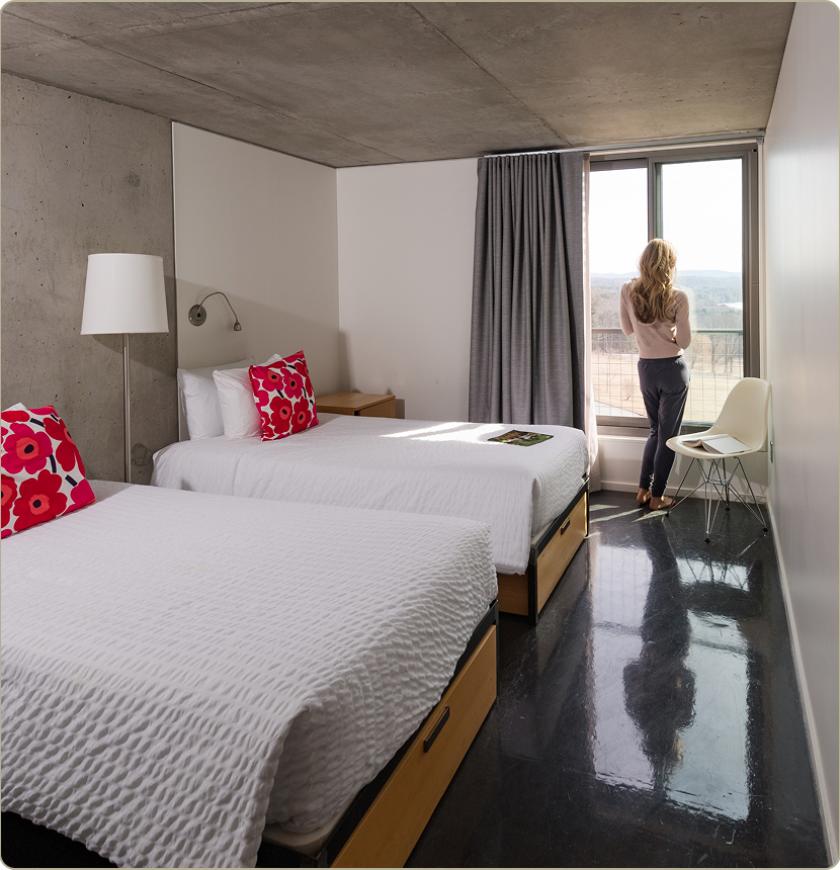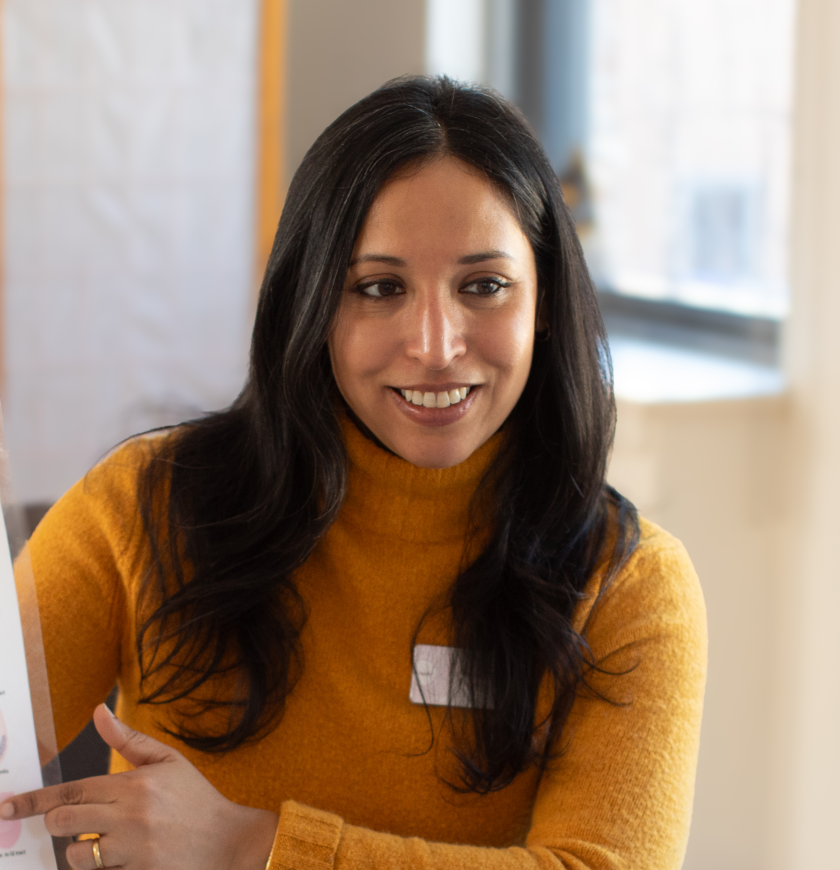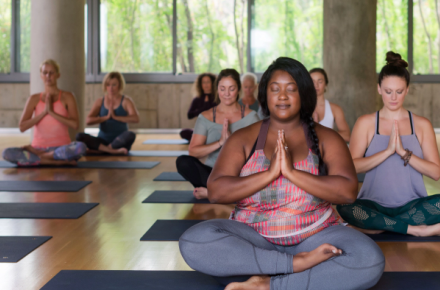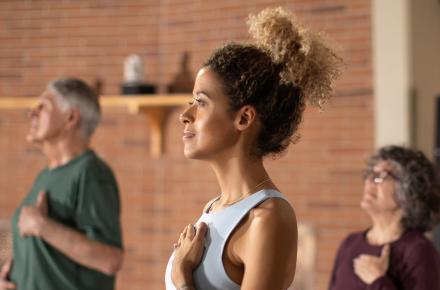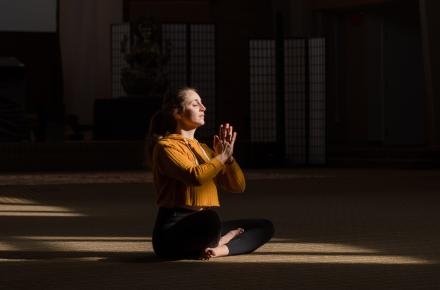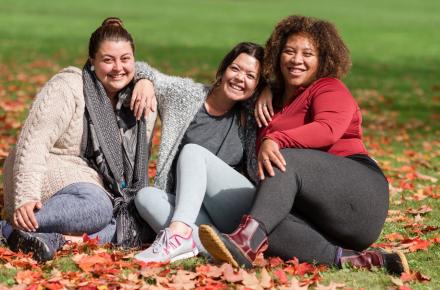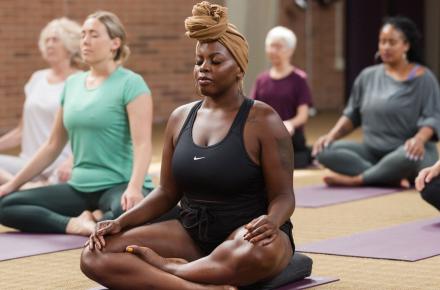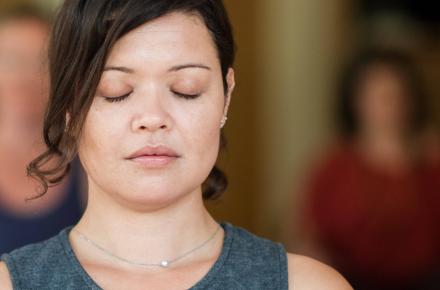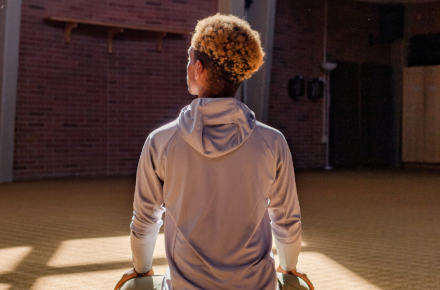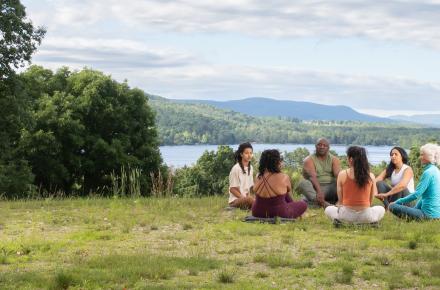How My Sixth-Grade Self Made Me the Yoga Teacher I Am Today

by Julie Bolitho
For weeks now, a recurring memory has been surfacing in my mind every time I step into a yoga studio to teach a class. I see myself at 11 years old, in the gym of the middle school where I attended sixth grade—a gym that felt enormous and was built to hold school assemblies in which students received anti-drug messages, delivered through song and dance.
The gym teacher’s name fell into the recesses of my brain long ago, but I can still see him—balding, glasses, gym shorts, whistle around his neck, a bit awkward. He was the butt of many school jokes, though they were never particularly malicious. There were easier targets for the malicious jokes … targets like me.
Every gym class, the students were lined up in rows: a grid of 25 or so sixth-graders. The person at the front of the row was required to lead the class in one of that week’s calisthenics exercises. The following week, that student would move to the back of the row and wouldn’t have to lead again until they returned to the front of the line.
One afternoon, when my turn arrived, I was required to lead push-ups. It was a disastrous and cruel twist of fate for an overweight, largely unfit child. My weight brought with it the taunts and jeers of my classmates and the label of “fat kid.” Beyond the psychological impacts of bullying and not being able to look nice in the same clothes as other girls, I was also totally unaware of how to make my body work athletically. Push-ups were a form of school-sanctioned torture for a fat kid, but I put on a brave face (I always did) and went to the front of the class to lead the exercise. I thought I did all right. My elbows bent. I counted out the push-ups. I hurriedly went back to my seat when it was over.
During the next period, Language Arts (my favorite), a few boys from my class began making fun of the way I had done the push-ups. They told me I wasn’t really doing them, and mocked my arm movements and the shape of my body. I listened intently because, despite the fact that I was being bullied, I was also an incredibly naïve and diligent child. I wanted to know what I did wrong, even though I had absolutely no kinesthetic intelligence yet.
The next time I led push-ups, they were better, even if they were barely push-ups. I maintained a Plank position and my elbows bent only slightly, but my body stayed aligned. When I questioned my tormentors afterward (remembering this, my heart breaks for my 11-year-old self), to their slim credit, they conceded that my push-ups were mildly improved. But this was only after snickering and heckling as I made my perp walk to the front of the class.
This is the memory that has been floating around me lately like autumn leaves falling. It feels poignant that I now make a living in part by leading people in Plank position (among many other poses). While I rarely ask students to do push-ups (to be honest, this is still not a strong point for me), I ask them to find their physical limits, but to do so compassionately. I ask them to learn about their bodies and how they work, to take breaks when they need them. I teach them in all the ways that my sixth-grade self needed to be taught but wasn’t. I tell them all the things that I still need to hear because, despite cultivating self-awareness, I still struggle sometimes, like everyone does, when I look in the mirror. Ironically, astoundingly, that dreadful time 20 years ago now provides the foundation for a loving, positive teaching practice.
During my teacher training at Kripalu in 2011, one of the trainers said to me after I led a practice session, “It’s like you don’t want to be seen.” She was right; I didn’t, and I still often don’t. Making eye contact with my students during a session remains one of the hardest elements of my teaching practice. Not only is it an intimate moment between two spiritual and physical beings, it requires a recognition on my part that I am at the front of the room leading people in exercise—and that a veil is not going to lift to reveal a fraudulent, overweight sixth-grader disguised in fashionable yoga leggings (leggings that took me years to wear as I believed that they were for other, skinnier women).
There is a danger in the yoga community of placing teachers on pedestals; it’s a danger for both teachers and students. For most of us, our earliest memories of disappointment come from times when we perceived a loved one as less perfect than we’d previously thought, or when we realized we were less perfect than we’d imagined ourselves to be.
In the past, when I failed to make enough eye contact with students, I felt guilty and berated myself on the drive home (clearly, a helpful tactic). Until, one day, I simply accepted that this was something that was taking me years to work through (and reminded myself that my students continue to come to class, and seem far less bothered by my eye contact issues than I am).
Sharing our flaws as yoga teachers may be as important as sharing our flows. We often try to separate teaching from personal practice when, in fact, our teaching practice can serve us just as much, if not more, than our personal practice. Teaching is a personal practice, just of a different nature. Teaching insists that we encounter fears within ourselves about our worth, our appearance, and every other façade the ego throws up for us. Teaching demands that we accept the moments when we fall short; that we simply show up on the mat, like our students, and surrender. It is a gift of communion with the divine, human, embodied experience. Holding that space requires a level of frightening truthfulness for all involved but, when we come into it, when we fully embrace what rises up from the practice, the fears tend to float away, much like the autumn leaves, bringing us to the place we wanted to get to all along—a place of union, connection, truth, and light.
Julie Bolitho is a Kripalu Yoga teacher from northern Michigan who currently resides in Oxfordshire, England. A Truman Scholar and a published poet and essayist, Julie is currently at work on a memoir. juliebolitho.com, sanctuarygrace.com
© Kripalu Center for Yoga & Health. All rights reserved. To request permission to reprint, please e-mail editor@kripalu.org.


